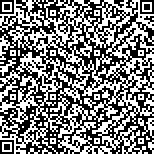| 摘要: |
| [目的]以武汉城市圈为研究对象,对武汉城市圈城镇化与土地集约利用响应关系进行评价。[方法]基于武汉城市圈内不同城市的城镇化和土地集约利用数据,构建城镇化与土地集约利用之间响应关系的变量序列,并利用向量自回归(VAR)模型进行格兰杰因果检验及脉冲响应和方差分解分析。[结果]VAR模型的拟合度(R2>090)较高,能反映武汉城市圈城镇化与土地集约利用之间的相互作用关系。对于武汉城市圈内武汉和黄冈等城镇化水平较高的地区,城镇化的冲击对土地集约利用具有显著的正向影响,城镇化是推进土地集约利用程度持续提高的主要动力; 对于潜江等城镇化水平相对较低的地区,城镇化对土地集约利用的冲击效应相对较弱,而土地集约利用促进城镇化水平提升的作用较明显。[结论]武汉城市圈内的大城市可通过推进城镇化与土地集约利用的双轮驱动,达到两者的协调发展,而小城市通过提高土地集约利用程度来推动城镇化水平的提升,以期为促进武汉城市圈城镇化与土地集约利用的协调发展提供科学依据。 |
| 关键词: 城镇化武汉城市圈VAR 模型脉冲响应方差分解 |
| DOI: |
| 分类号:K901 |
| 基金项目:国家自然科学基金项目“50多年来汉江平原土地利用演变对流域水资源的影响及生态环境响应”(41271534) |
|
| ANALYSIS ON RESPONSE BETWEEN URBANIZATION AND INTENSIVE LAND USE IN WUHAN CITY CIRCLE |
|
Muhtar·Amat1,2, Li Xigui1, Zhou Yong1※, Gu Fenlan1, Han Yazhi1, Xiao Pengnan1
|
|
1. School of Urban & Environment Sciences, Central China Normal University, Wuhan, Hubei 430079, China;2. Institute of Life and Geography Sciences, Kashi University, Kashi, Xinjiang 844006, China
|
| Abstract: |
| Taking Wuhan city circle as the research object, this research is intended to evaluate the response relationship between urbanization and intensive land use. Based on the attribute data of urbanization and intensive land use in Wuhan city circle, Vector Autoregressive Model was established on the platform of Eviews8.0 and the mutual feedback relationship between urbanization and intensive land use was evaluated by using Granger causal analysis, impulse response method and variance decomposition method. The results showed that the fitting degree of VAR model was higher than 0.90, which could reflect the correlation between urbanization and intensive land use in Wuhan city circle. For the primary and secondary cities in Wuhan city circle such as Wuhan and Huanggang, urbanization was the reason for intensive land use, that was, urbanization had a significant positive impact on intensive land use, but the impact of intensive land use on urbanization was not obvious. For Qianjiang and other tertiary cities, the impact of urbanization on intensive land use was not obvious, while the intensive land use had a more pronounced impact on urbanization. Large cities in the Wuhan city circle can achieve land intensive use targets by increasing urbanization levels, while small cities increase land intensification to promote urbanization. The results can provide a scientific basis for promoting the coordinated development of urbanization and land use in Wuhan city circle and have certain practical significance. |
| Key words: urbanization Wuhan city circle VAR model impulse response variance decomposition |

